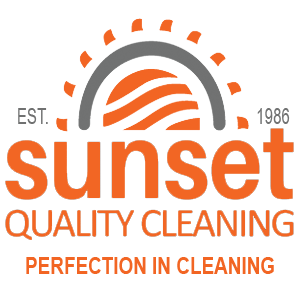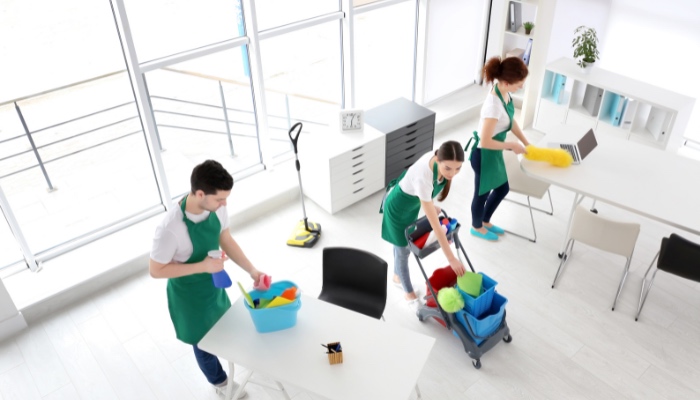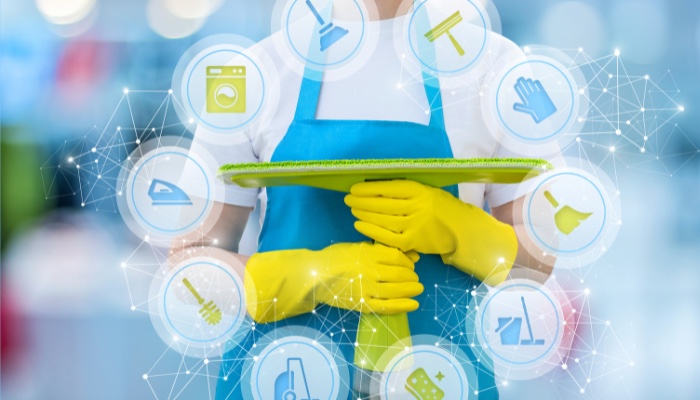The Green Shift: A Guide to Transitioning Your Commercial Cleaning Practices
In today’s environmentally conscious world, businesses across Canada are making significant changes to reduce their ecological footprint. The “Green Shift” in commercial cleaning represents a fundamental transformation in how facilities maintain cleanliness while prioritizing environmental sustainability, occupant health, and social responsibility. This shift is accelerating due to growing environmental awareness, regulatory pressures, and a renewed focus on workplace health and safety.
As commercial spaces evolve, so too must the approaches to keeping them clean. The transition from traditional cleaning methods to eco-friendly alternatives offers tremendous benefits, from improved indoor air quality and reduced environmental impact to enhanced brand reputation and potential cost savings.
This article will walk you through why green cleaning matters, how to assess your current practices, and practical steps to implement sustainable cleaning solutions in your commercial space.
Why Go Green?
The benefits of transitioning to environmentally friendly cleaning practices extend far beyond simply “doing good” for the planet. Let’s explore the compelling business case for making the switch:
Employee Health and Productivity
Traditional cleaning chemicals often contain volatile organic compounds (VOCs), ammonia, chlorine bleach, and other harsh substances that can trigger respiratory issues, skin irritation, and allergic reactions.
According to a Harvard University study, improved indoor environmental quality, including reduced chemical exposure, can double cognitive function scores and boost productivity by up to 8%.
- Reduced absenteeism: Buildings with green cleaning programs report 3-5% lower absenteeism rates due to fewer respiratory issues and chemical sensitivities
- Improved morale: 78% of employees report feeling more valued when their employer prioritizes healthier work environments
- Enhanced focus: Reduction in irritants leads to fewer distractions and complaints
Economic Benefits
While some green products may have slightly higher upfront costs, the overall financial picture often favors sustainable approaches:
- Reduced water and chemical usage: Green cleaning methods typically use 30-50% less water and chemicals, resulting in direct supply cost savings
- Lower waste disposal costs: Concentrated products and reusable tools reduce packaging waste by up to 90%
- Equipment longevity: Less harsh chemicals mean less damage to surfaces, extending the life of flooring, fixtures, and furniture
- Potential insurance premium reductions: Some providers offer reduced rates for buildings with certified green cleaning programs due to lower health and safety risks
Regulatory Compliance and Certification Advantages
As environmental regulations tighten across Canada, green cleaning helps businesses stay ahead of compliance requirements:
- Many municipalities are implementing stricter regulations on chemical discharge into water systems
- LEED certification provides valuable marketing advantages and potentially higher property values, with green cleaning practices contributing to several credit categories
- Buildings with recognized green certifications command 6-10% higher rental rates and higher occupancy levels
Customer and Tenant Preferences
Modern consumers and tenants increasingly expect businesses to demonstrate environmental responsibility:
- 86% of Canadian consumers are more likely to support businesses that demonstrate environmental commitment
- In commercial real estate, green-certified buildings have 16% higher tenant retention rates
- Healthcare facilities with green cleaning programs report 9% higher patient satisfaction scores
Common Misconceptions About Green Cleaning
Despite its benefits, some persistent myths continue to surround green cleaning:
| Misconception | Reality |
| Green cleaning is less effective | Modern green products match or exceed the performance of traditional chemicals in most applications |
| It’s significantly more expensive | While some products cost more initially, reduced usage amounts and decreased health-related costs often result in net savings |
| Implementation is too complicated | Phased approaches allow for manageable transitions without disruption |
| Green products don’t disinfect properly | Many green disinfectants are approved by Health Canada and meet the same efficacy standards as traditional options |
Core Elements of a Green Cleaning Program
A truly effective green cleaning program involves much more than simply replacing a few products. It requires a systematic approach encompassing multiple aspects of your cleaning operations:
Eco-friendly Products
- Third-party certified cleaning solutions from organizations like EcoLogo (Canada’s leading environmental certification program) and Green Seal
- Bio-based products derived from renewable agricultural resources rather than petroleum
- Low or zero VOC formulations to improve indoor air quality
- Concentrated products that reduce packaging waste and transportation emissions
Energy-Efficient Equipment
- HEPA-filtered vacuum cleaners that capture 99.97% of particulates, significantly improving air quality
- Microfiber mops and cloths that require less water and chemicals while improving cleaning efficacy
- Energy Star certified equipment that reduces electricity consumption
- Battery-powered equipment with extended run times and reduced noise pollution
Waste Reduction Strategies
- Bulk purchasing and dispensing systems to minimize packaging waste
- Recycled and recyclable paper products and trash liners
- Proper waste sorting and recycling protocols
- Reusable cleaning tools instead of disposable options
Staff Training and Protocol Development
- Comprehensive training on proper dilution and application methods
- Understanding of cross-contamination prevention techniques
- Documentation of green cleaning procedures and expectations
- Regular updates on new sustainable products and methods
Compliance and Measurement
- Regular measurement of chemical usage, waste generation, and water consumption
- Documentation of cleaning product inventory and safety data
- Alignment with recognized standards such as LEED, BOMA BEST, and WELL Building Standard
- Ongoing evaluation and continuous improvement processes
Assessment: Understanding Your Current Cleaning Footprint
Before implementing changes, it’s essential to thoroughly understand your current cleaning operations. This assessment provides the baseline against which you’ll measure progress and identify priority areas:
Chemical Inventory Analysis
Begin by cataloging all cleaning products currently in use throughout your facility:
- Gather all safety data sheets (SDS) for cleaning products
- Identify products containing ingredients of concern:
- Alkylphenol ethoxylates (APEs)
- Phthalates
- Heavy metals
- Chlorine bleach
- Ammonia
- Synthetic fragrances
- Document current usage rates and costs
- Note which applications require specialized products
Equipment Efficiency Evaluation
Assess your current cleaning equipment for energy efficiency, water usage, and effectiveness:
- Age and condition of vacuum cleaners, floor machines, and automation equipment
- HEPA filtration capabilities
- Water usage rates for carpet cleaners and auto-scrubbers
- Battery types and charging requirements
- Noise levels during operation
Water Usage Assessment
Quantify how much water your cleaning operations consume:
- Dilution rates for cleaning chemicals
- Floor cleaning water consumption
- Carpet cleaning water usage
- Restroom cleaning water requirements
- Opportunities for water reduction through equipment or method changes
Waste Generation Measurement
Document the waste created by your cleaning operations:
- Packaging from cleaning products
- Disposable cleaning tools (wipes, mop heads, etc.)
- Empty chemical containers
- Paper products usage
Training and Protocol Review
Evaluate your current cleaning procedures and staff knowledge:
- Documented cleaning protocols
- Training frequency and comprehensiveness
- Staff understanding of proper chemical handling and dilution
- Cross-contamination prevention practices
Stakeholder Identification and Engagement
For a successful transition, identify and involve key stakeholders early in the process:
- Facility management team
- Procurement department
- Sustainability officers
- Building occupants
- Cleaning staff and supervisors
- Health and safety representatives
Green Cleaning Assessment Checklist
- Complete chemical inventory with hazard assessment
- Equipment inventory with energy efficiency ratings
- Water usage quantities by cleaning task
- Waste audit of cleaning-related materials
- Review of cleaning protocols and frequencies
- Staff interviews regarding current practices
- Identification of high-priority areas for improvement
- Budget analysis for current cleaning operations
Each stakeholder group brings a valuable perspective to the assessment process. For example, cleaning staff can provide insights on product effectiveness and application challenges, while occupants may report sensitivities to certain chemicals or cleaning practices.
Steps to Transition to Sustainable Cleaning (Step-by-Step Guide)
1. Audit Your Current Cleaning Practices
Using the assessment framework outlined above, document your baseline operations thoroughly:
- Create a complete inventory of products, equipment, and protocols
- Identify products containing harmful chemicals
- Calculate current resource usage (chemicals, water, energy)
- Document waste generation
- Assess staff knowledge and training needs
2. Develop a Green Cleaning Policy
Create a formal policy document that outlines your commitment to sustainable cleaning:
- Set specific, measurable goals for chemical reduction, water conservation, and waste minimization
- Define roles and responsibilities for implementation
- Establish a timeline for transition phases
- Create metrics for success measurement
- Secure management approval and resource commitment
3. Source Certified Green Products
Begin replacing conventional products with certified sustainable alternatives:
- Prioritize high-volume products for maximum impact
- Look for third-party certifications like EcoLogo and Green Seal
- Request samples from vendors to test effectiveness
- Consider concentrated formulations to reduce packaging and transportation impacts
- Evaluate cost differences and potential offsets
4. Invest in Efficient Equipment
Gradually upgrade to more sustainable cleaning equipment:
- HEPA-filtered vacuum cleaners
- Microfiber cleaning systems
- High-efficiency floor machines
- Chemical-free cleaning technologies (steam, electrolyzed water)
- Battery-powered equipment with reduced noise levels
5. Train Your Cleaning Staff
Comprehensive training is crucial for successful implementation:
- Proper dilution and application of green products
- Effective use of microfiber and cross-contamination prevention
- Operation and maintenance of new equipment
- Understanding the “why” behind green cleaning practices
- Documentation and reporting procedures
6. Implement Pilot Programs
Before facility-wide rollout, test new products and methods in limited areas:
- Select representative spaces for initial implementation
- Document baseline conditions for comparison
- Implement new products and methods
- Collect feedback from cleaning staff and occupants
- Measure results against conventional methods
- Adjust approaches based on findings
7. Communicate the Change
Inform all building occupants about the transition to green cleaning:
- Explain the health and environmental benefits
- Address any concerns about effectiveness
- Provide channels for feedback
- Post educational materials about the program
- Highlight the organization’s commitment to sustainability
8. Monitor Progress and Continuously Improve
Establish ongoing evaluation processes:
- Track chemical usage and costs
- Monitor water consumption
- Measure waste reduction
- Conduct regular staff refresher training
- Survey occupant satisfaction
- Stay current with new green cleaning innovations
Implementation: Green Cleaning Products and Methods
Certified Cleaning Solutions
When selecting green cleaning products, third-party certifications provide assurance of environmental claims:
All-Purpose Cleaners
- Look for plant-based surfactants
- Avoid phosphates, phthalates, and artificial fragrances
- Consider concentrated formulas with appropriate dilution systems
- Applications: countertops, walls, fixtures, and general surface cleaning
Floor Care Products
- Low-VOC floor finishes and strippers
- Bio-based cleaners for different flooring types
- pH-neutral formulations for sensitive surfaces
- Applications: daily cleaning, periodic maintenance, restoration
Disinfectants and Sanitizers
- Health Canada approved products with lower environmental impact
- Hydrogen peroxide-based formulations
- Products that require shorter contact times
- Applications: high-touch surfaces, restrooms, food preparation areas
Carpet Care
- Low-moisture extraction cleaners
- Enzyme-based spot removers
- Fragrance-free pre-sprays
- Applications: routine maintenance, spot cleaning, deep cleaning
Microfiber Technology
Microfiber cleaning tools represent one of the most significant advances in sustainable cleaning:
- Consists of split synthetic fibers 1/100th the diameter of a human hair
- Captures particles through electrostatic attraction and physical trapping
- Reduces chemical usage by up to 90% for many applications
- Requires 95% less water than traditional cotton mops
- Color-coding systems prevent cross-contamination
- Can withstand hundreds of launderings before replacement
- Applications include:
- Microfiber cloths for surface cleaning
- Flat mops for floor cleaning
- Dusting tools for high and low surfaces
- Glass cleaning cloths for streak-free results
HEPA Filtration Systems
High-Efficiency Particulate Air (HEPA) filtration captures 99.97% of particles as small as 0.3 microns:
- Essential for vacuum cleaners in green cleaning programs
- Prevents recirculation of dust, allergens, and particulates
- Improves indoor air quality during and after cleaning
- Recommended for all carpeted areas and porous surfaces
- Look for CRI Green Label certification for vacuum cleaners
Steam Cleaning
Chemical-free cleaning using only water heated to high temperatures:
- Kills bacteria, viruses, dust mites, and other pathogens
- Zero chemical residue or off-gassing
- Effective on multiple surfaces (floors, restrooms, kitchens)
- Reduces water usage compared to traditional methods
- Particularly valuable for sensitive environments and occupants
- Equipment options range from portable units to larger commercial systems
Electrolyzed Water Systems
An emerging technology that converts salt water into a powerful cleaner and sanitizer:
- Creates hypochlorous acid and sodium hydroxide through electrolysis
- Effective against pathogens without harmful chemical residues
- Returns to ordinary salt water after use
- Eliminates chemical shipping, storage, and disposal
- On-site generation reduces packaging waste
- Initial investment is offset by the elimination of chemical purchases
UV-C Disinfection
Ultraviolet light technology for chemical-free surface and air disinfection:
- Damages microorganism’s DNA to prevent reproduction
- No chemical residues or environmental impact
- Particularly effective in healthcare environments
- Can reach areas difficult to clean with traditional methods
- Becoming more affordable and accessible for commercial applications
DIY Green Cleaning Solutions
For budget-conscious organizations, some cleaning tasks can utilize simple ingredients:
- Vinegar and water (1:1) for glass and stainless steel cleaning
- Baking soda paste for stubborn stains and odor removal
- Hydrogen peroxide (3%) for disinfection of non-porous surfaces
- Essential oils (tea tree, lemon) for natural fragrance and antimicrobial properties
However, commercial environments typically require documented efficacy and consistent results that third-party certified products provide.
Special Cleaning Challenges
Carpet Cleaning
- Low-moisture encapsulation methods reduce water usage and drying time
- HEPA-filtered vacuum cleaners for daily maintenance
- Hot water extraction with green-certified solutions for periodic deep cleaning
- Proper ventilation during and after cleaning to prevent moisture issues
Floor Stripping and Refinishing
- Zero-VOC strippers to remove old finish
- Low-odor floor finishes with extended wear characteristics
- Burnishing with HEPA-filtered equipment to maintain appearance
- Extended refinishing schedules to reduce chemical usage
Restroom Cleaning
- Enzymatic cleaners for organic matter and odor control
- Steam cleaning for grout and hard-to-reach areas
- Microfiber systems with color-coding to prevent cross-contamination
- Touchless fixtures to reduce cleaning frequency and chemical usage
Overcoming Common Challenges
Effectiveness Concerns
One of the most persistent myths is that green cleaning products don’t work as well as their conventional counterparts:
Challenge: Staff or building occupants believe green products are less effective at cleaning and disinfecting.
Solution:
- Conduct side-by-side demonstrations comparing green and conventional products
- Share third-party testing data on product efficacy
- Implement pilot programs with before-and-after documentation
- Ensure proper dilution and application methods through training
- Collect and share occupant feedback on cleanliness levels
Budget Constraints
Financial considerations often present barriers to green cleaning adoption:
Challenge: Higher upfront costs for some green products and equipment.
Solution:
- Phase implementation to spread costs over multiple budget cycles
- Focus initially on high-volume products for economies of scale
- Calculate total cost of ownership, including reduced water usage and longer equipment life
- Document reduced absenteeism and productivity benefits
- Apply for utility rebates for energy-efficient equipment
- Consider chemical management systems that prevent overuse
Resistance to Change
Human factors can significantly impact successful implementation:
Challenge: Staff accustomed to traditional products and methods may resist new approaches.
Solution:
- Involve cleaning staff in product selection and testing
- Provide comprehensive hands-on training with new products and equipment
- Explain the “why” behind changes, including health benefits for staff themselves
- Recognize and reward successful adoption
- Designate “green cleaning champions” within the cleaning team
- Address concerns promptly and transparently
Navigating Certifications and Compliance
The landscape of green certifications can be confusing:
Challenge: Understanding which certifications are most relevant and credible for Canadian organizations.
Solution:
- Focus on established Canadian certifications like EcoLogo and BOMA BEST
- Consult with Canada Green Building Council for LEED compliance requirements
- Work with vendors who understand Canadian certification standards
- Develop a simple reference guide for purchasing decisions
- Consider consulting services for initial certification navigation
Supply Chain Limitations
Product availability and distribution can present challenges:
Challenge: Limited local availability of certain green cleaning products.
Solution:
- Partner with distributors committed to green product lines
- Consolidate orders to reduce transportation impacts
- Explore product alternatives with similar environmental profiles
- Advocate with suppliers to expand green product offerings
- Consider bulk purchasing cooperatives with other local businesses
Future Trends in Green Commercial Cleaning
IoT and Smart Cleaning Systems
The Internet of Things is revolutionizing cleaning operations:
- Sensors that monitor building usage patterns to optimize cleaning schedules
- Dispensing systems that provide usage data and automatic reordering
- Connected equipment that reports maintenance needs and usage statistics
- Indoor air quality monitoring to validate cleaning effectiveness
- Occupancy sensors that identify areas needing attention
Robotics and Automation
Autonomous cleaning equipment is becoming increasingly sophisticated:
- Robotic vacuum and floor scrubbing machines that operate during off-hours
- UV-C disinfection robots for healthcare and sensitive environments
- Window washing automation for building exteriors
- Reduced labor costs and increased consistency
- Integration with building management systems
Bioenzymatic Cleaning Advances
Living organisms are providing new cleaning capabilities:
- Probiotics that continue cleaning after application
- Enzyme-based cleaners that break down organic matter
- Biofilm removal without harsh chemicals
- Extended activity compared to traditional disinfectants
- Particularly effective for drain maintenance and odor control
Zero-Waste Cleaning Operations
The ultimate goal of sustainable cleaning is eliminating waste entirely:
- Refillable container programs for cleaning chemicals
- Durable equipment designed for repair rather than replacement
- Compostable cleaning tools and supplies
- Water recycling systems for floor cleaning equipment
- Closed-loop chemical management systems
Circular Economy Principles
Moving beyond recycling to true materials circularity:
- Products designed for complete recycling or biodegradation
- Chemical leasing models where suppliers maintain ownership of products
- Equipment take-back and refurbishment programs
- Upcycled and repurposed cleaning tools
- Shared equipment models for specialized machines
The Role of a Green Cleaning Partner
While transitioning to green cleaning practices is achievable for any organization, partnering with an experienced green cleaning service provider like Sunset Quality Cleaning offers significant advantages:
- Immediate access to trained staff already familiar with green cleaning protocols
- Up-to-date knowledge of the most effective sustainable products and methods
- Existing inventory of environmentally friendly cleaning equipment
- Established relationships with green product suppliers
- Continuous education on emerging sustainable technologies
Sunset Quality Cleaning brings years of expertise in environmentally responsible cleaning practices to commercial facilities in the Kitchener-Waterloo region.
Our local cleaning company consistently delivers superior results while reducing environmental impact. By outsourcing to specialists already aligned with your sustainability goals, you can achieve immediate improvements while focusing on your core business operations.
Conclusion
The transition to green cleaning practices represents more than just a trend—it’s a fundamental shift in how we approach commercial cleaning with benefits for people, planet, and profit. From improved occupant health and reduced environmental impact to potential cost savings and enhanced brand reputation, sustainable cleaning practices offer compelling advantages for forward-thinking organizations.
By following the assessment framework and implementation steps outlined in this guide, your organization can successfully navigate the challenges of transitioning to green cleaning. Start with a thorough understanding of your current practices, set clear goals, implement changes systematically, and continuously evaluate your progress.
Whether you choose to implement green cleaning practices in-house or partner with an experienced provider like Sunset Quality Cleaning, the most important step is simply to begin. Every chemical replaced, every energy-efficient machine purchased, and every staff member trained in sustainable methods contributes to healthier indoor environments and a more sustainable future.
Ready to explore how green commercial cleaning services in Kitchener-Waterloo can benefit your facility? Contact our green cleaning experts today for a free consultation or to request a quote.






